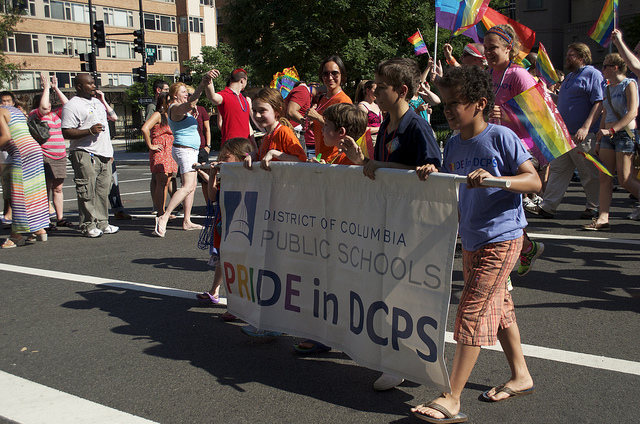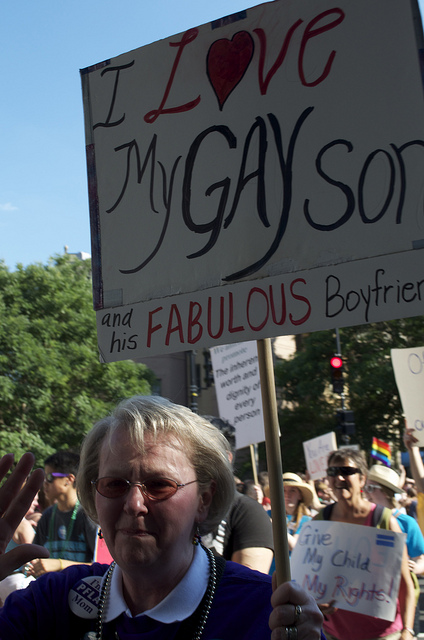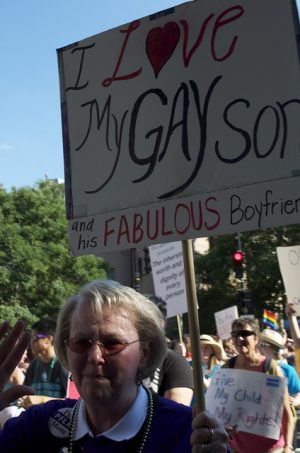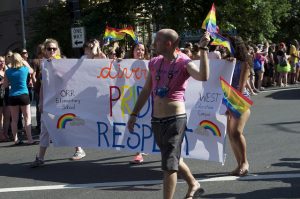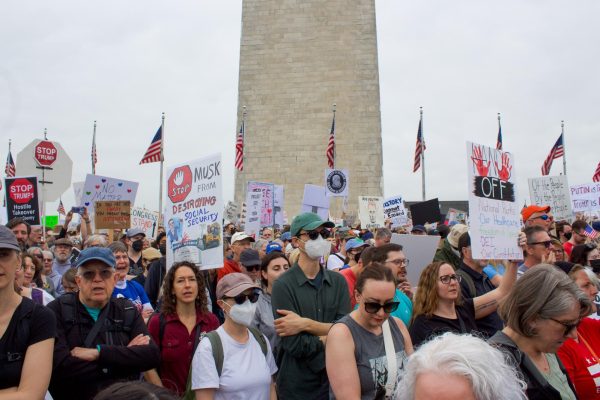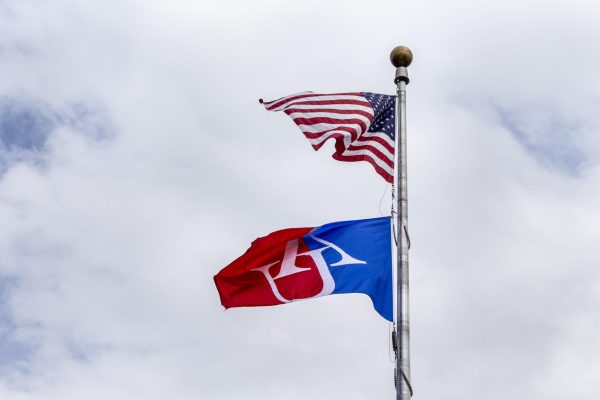What’s Pride Got to Do With It?
Just as July ushers in patriotic celebrations and dazzling firework displays on the fourth, it brings to a close an entire month of an equally joyous celebration: LGBT Pride Month.
While the Pride Parade in New York City serves as the biggest celebration—with over one million people turning out for the June 24 parade— D.C. held its own last month with the Capital Pride parade and festival.
The Capital Pride Parade on June 8 and the Festival on June 9 drew huge crowds, with around 100,000 people turning out this year for Saturday’s parade and over 250,000 for the street festival the next day. In the past 37 years, the event has grown from a one-day block party to a massive, month-long celebration hosted by the Capital Pride Alliance.
I remember seeing pictures of the event on the news when growing up, but never thought I’d actually attend. Even after I realized I was gay during middle school and later when I came out to a few close friends during my junior year of high school, something about being gay still seemed discomforting and taboo— and I was still a little wary of how other people I grew up around would treat me if they knew.
“With students—especially ones who are coming out or coming to terms with whatever identity they have— I talk about trying to find spaces where you can be yourself and not constantly worry about who knows,” Matt Bruno, The Program Coordinator for AU GLBTA Resource Center, said. “That space can be here in the Resource Center, with the Queers and Allies student group, or even on your floor where you know there are a couple of other LGBT identifying or LGBT friendly people.”
Bruno works in the GLBTA Resource Center along with Director Sara Bendoraitis. The center does everything from holding workshops like the Safe Space program and Trans 101 to meeting with students who want to talk with a center member about coming out. I spoke with Bruno before going to the Pride parade and festival to get a better feel for the events and to find out a bit more about how the GLBTA Resource center uses the opportunity.
“I think the parade it a great place—you just kinda feel good about yourself. It’s so cool to be around so many queer people. I think the festival does that too—but it also offers the opportunity to meet people or organizations you might have seen in the parade,” he said. Bruno described the Center’s tabling presence at the festival as an opportunity to reach out to alumni, show prospective students the LGBT-friendly environment at AU and network with organizations that might be interested in attending or speaking at any of the GLBTA Resource Center’s events.
“I’d like for a bunch of students to be able to go to the festival and parade. I think a bunch of them would feel—they just wouldn’t know what to do. They’d be like, ‘Oh my God, I can’t believe there are this many queer people!’” Bruno said.
I didn’t completely appreciate the sentiment until I stood in the middle of crowd at the parade, surrounded by thousands of LGBT individuals and supporters. Members of the crowd stood on their toes, climbed onto ledges, inched further into the street to get a glimpse at everything from the famed DC Cowboys dance troupe to traditional marching bands.
Parade contingents bombarded the attendees with a rain of free candy, condoms, stickers, flyers and enough bead necklaces to make the street seem reminiscent of a Mardi Gras parade. Despite common comparisons between Mardi Gras and festivities during LGBT Pride month, the pride parade and festival took on a much different tone than the celebration in the New Orleans French Quarter. Here, the festivities instead focused on acceptance and celebration of difference—and there was something refreshing about shrugging off the heterosexual-dominated world for an hour or two and immersing yourself into a total celebration of everything queer.
I saw most of the parade through the lens of my camera, keeping the shutter between the festivities and myself—until someone bonked me in the head with an inflatable baseball chucked from one of the parade floats.
I lowered the camera, swapping a 35mm lens for aviator shades. The sun had decided to come out, too. It blazed from the oceanic sky, causing beads of sweat to form underneath the brim of my ball cap.
“I need y’all to take two big steps back,” the announcer’s voice boomed from the loudspeakers for the fifth time in the past fifteen minutes as the crowd drifted further into the road for a better view of the festivities. Most people ignored the command or took half a baby step back, only moving to the curb when parade volunteers marched along the side of the road to push them out of the way of an oncoming contingent.
While I expected the presence of gay advocacy powerhouses like the Human Rights Campaign, gay social groups and even political sections like Obama for America, I was more surprised to see religious groups like Mormons for Marriage Equality and a number of churches march by alongside flag-waving Peace Corps members and companies like Citibank and Geico.
Not even the constant announcement to get out of the road put a damper on the overwhelmingly positive environment, a bubbling street scene filled to the brim with giddy joy.
The sentiment carried over to the festival on the next day, which stretched towards the Capital from the corner of 7th and Pennsylvania Avenue. Even with a stage using the Capitol building as its backdrop and a pay-to-enter beer garden off to the side, a majority of the festival still focused on networking and outreach to the LGBT community.
“It’s a great way for larger organizations to reach out to such a specific population—and it’s a specific population that’s seeking out companies and places that are going to be affirming. It works for both companies and people who are interested in working in LGBT-affirming places,” Bruno told me before going to the festival. When there on Sunday, I noticed LGBT organizations tabling alongside a handful of companies and a surprising number of government agencies. Each group was eager to showcase their advocacy work or their LGBT-friendly policies, and I received an armful of flyers during the festival from more organizations than I could count.
Though Pride Month is behind us, the importance of celebrating your identity has never been more clear. Rep. Barney Frank (D-Mass.) married his longtime partner, Jim Ready, yesterday in Massachusetts. R&B artist Frank Ocean revealed this week that his first love was a man. And CNN anchor and journalist Anderson Cooper publicly came out of the closet, telling the Daily Beast, “The fact is, I’m gay, always have been, always will be, and I couldn’t be any more happy, comfortable with myself, and proud.” These powerhouses of politics, entertainment and journalism remind us that pride deserves to be celebrated all year long. Especially when a group called One Million Moms condemns Oreo (Oreo!) for announcing its support for gay pride.
When I headed back home after the end of the parade and festival, I had more than flyers, beads and stickers. The experience at Capital Pride gave me the opportunity to shrug off the world for an hour or two and immerse myself into a total celebration of everything queer.
And for the first time, I let myself fearlessly wear a bit of pride on my sleeve.
Photos by Taylor Kenkel.


